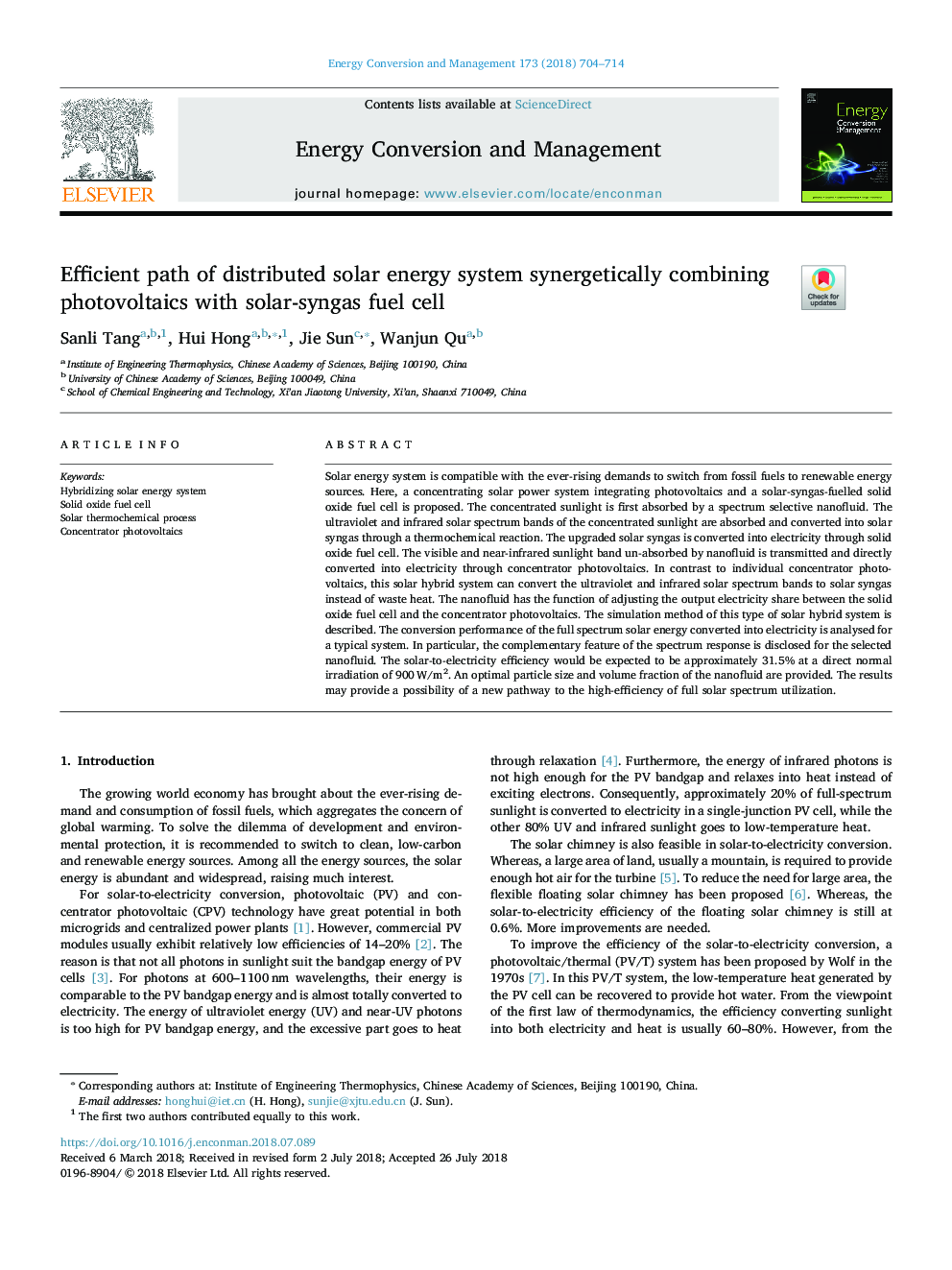| Article ID | Journal | Published Year | Pages | File Type |
|---|---|---|---|---|
| 7157782 | Energy Conversion and Management | 2018 | 11 Pages |
Abstract
Solar energy system is compatible with the ever-rising demands to switch from fossil fuels to renewable energy sources. Here, a concentrating solar power system integrating photovoltaics and a solar-syngas-fuelled solid oxide fuel cell is proposed. The concentrated sunlight is first absorbed by a spectrum selective nanofluid. The ultraviolet and infrared solar spectrum bands of the concentrated sunlight are absorbed and converted into solar syngas through a thermochemical reaction. The upgraded solar syngas is converted into electricity through solid oxide fuel cell. The visible and near-infrared sunlight band un-absorbed by nanofluid is transmitted and directly converted into electricity through concentrator photovoltaics. In contrast to individual concentrator photovoltaics, this solar hybrid system can convert the ultraviolet and infrared solar spectrum bands to solar syngas instead of waste heat. The nanofluid has the function of adjusting the output electricity share between the solid oxide fuel cell and the concentrator photovoltaics. The simulation method of this type of solar hybrid system is described. The conversion performance of the full spectrum solar energy converted into electricity is analysed for a typical system. In particular, the complementary feature of the spectrum response is disclosed for the selected nanofluid. The solar-to-electricity efficiency would be expected to be approximately 31.5% at a direct normal irradiation of 900â¯W/m2. An optimal particle size and volume fraction of the nanofluid are provided. The results may provide a possibility of a new pathway to the high-efficiency of full solar spectrum utilization.
Related Topics
Physical Sciences and Engineering
Energy
Energy (General)
Authors
Sanli Tang, Hui Hong, Jie Sun, Wanjun Qu,
